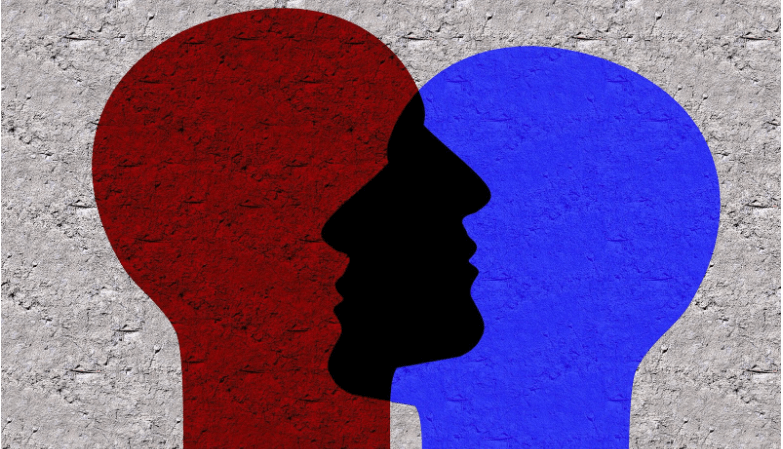By Brock Pierce
What does an American look like? What does an American sound like? What does an American believe? How does an American behave? For many Americans, the answer to those questions is to point to themselves and their neighbors. But, what happens when people who point to their neighbors encounter Americans who don’t look like their neighbors, don’t sound like their neighbors, don’t believe the same things as their neighbors, or don’t behave the same way as their neighbors?
It’s easier for us, as human beings, to support people who are “like us” and be against people who are “like them”. When we are afraid, it’s easy for us to feel threatened by people whom we don’t identify as being “like us”. This fact is related to how we evolved in small groups that cooperated internally but competed externally.
The story of “us versus them” is an ancient one that we have played out in countless ways, including wars, sports, and politics. Who are you for and who are you against? Those questions are ones that have often been used to identify people through group affiliation at the expense of peace and cooperation.
What flags, what banners, and what colors do you identify with? What names, what labels, and what languages do you identify with? In a country like the United States of America, with its fifty states, numerous ethnic groups, regional dialects, and variety of religious and personal beliefs, it can be unclear who is “us” and who is “them”. Yet, the problem of American identity is not how diverse America is. The problem of American identity is that we as Americans have identified ourselves more with what we stand against than what we stand for.
From the very beginnings of American independence, our country has identified itself as being against things. We were against taxation without representation. We were against the blending of church and state. Over time we defined ourselves as being against fascism, communism, and terrorism. But, who are we as Americans and what do we stand for?
Over a century ago, attempts were made to answer the question of who is an American through the artifice of race. Mostly this was due to the fact that the import of African slaves was banned by Congress in 1807 and the demand and allowance for immigration to the United States were limited mostly to Europe until the 1970s. Back in 1920, roughly 13% of the population was foreign-born with 85% of those people born in Europe.
America’s long history of allowing Europeans to immigrate and integrate while importing Africans as slaves, both before and after independence, had created a notable difference between lighter skinned European Americans and darker skinned African, Indigenous, and Hispanic Americans. Even as America’s population grew from less than 3 million in 1776 to 106 million in 1920, the percentage of “white” Americans grew from 79% to 88%.
When people asked what an American looked and sounded like, the assumed answer was – like a European. When people asked what an American believed and how they behaved, the assumed answer was – like a European. Justifying America’s history of “white” ethnically European masters and “black” ethnically African slaves required creating and maintaining illusions of ethnic superiority and inferiority that lasted long after slavery in America was finally outlawed in 1863.
Despite the vast majority of African Americans having a lineage dating back to before 1807, African Americans were treated as somehow less American than the European Americans who had arrived long after them. Despite Indigenous Americans having lived in North America for over ten thousand years, Indigenous Americans were still treated as somehow less American than European Americans who had just arrived, by comparison.
So, as we free ourselves of the illusions of ethnic superiority and inferiority, the question remains; who are we as Americans and what do we stand for? In the American Declaration of Independence, the second sentence begins, “We hold these truths to be self-evident, that all men are created equal…” Yet, somehow its authors failed to consider African American men as men, while failing to explicitly consider the equality of women at all. Nonetheless, they proceeded to finish the sentence by including these words of wisdom about Americans, “… that they are endowed by their Creator with certain unalienable Rights, that among these are Life, Liberty and the pursuit of Happiness.”
Given that the problem of American identity is that we have identified ourselves more with what we stand against than what we stand for, now is the time to solve that problem by taking a stand for our unalienable rights. Being an American is not about what you look like or what you sound like. Being an American has never truly been about what you believe, how you behave, or even where you were born. Being an American is about choosing to be an American, choosing to identify yourself with what America stands for. That is why it is so important for us to be clear in our choices – to ourselves, to our fellow Americans, and to the entire world.
It is time to say who we are, rather than who we aren’t. It is time for “us” to include all of us. It is time for Americans to stand for Life, Liberty, and Happiness for all. That is how to solve the problem of American identity. That is what is needed to make America great. Will you not choose to stand up for our inalienable rights? Will you not choose to identify yourself with those inalienable rights? Will you not choose to be a true American? Now is the time to choose what you stand for!





































